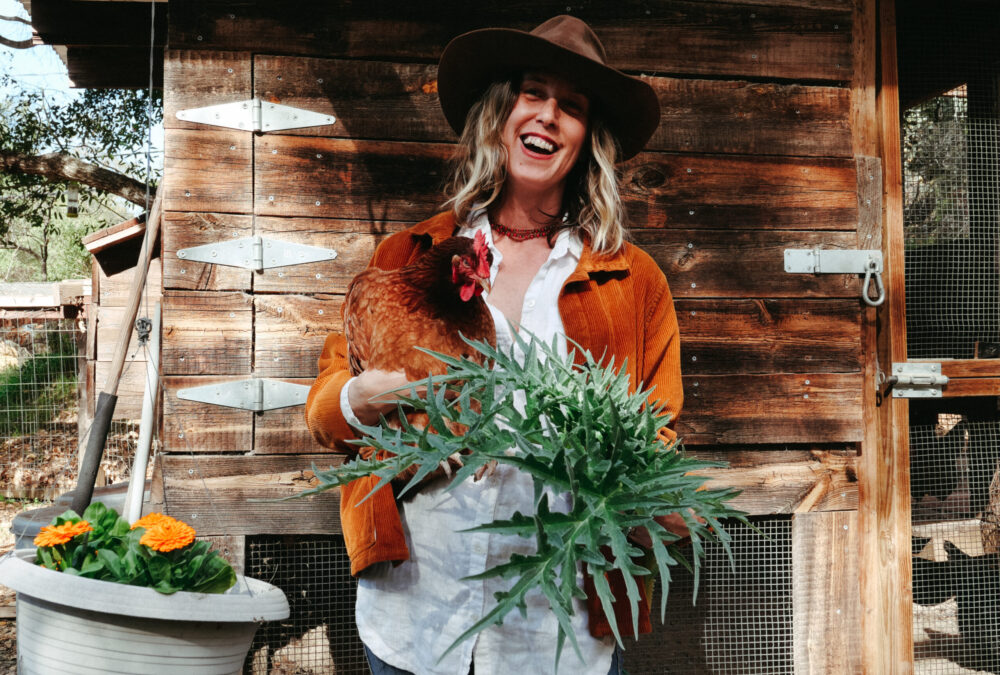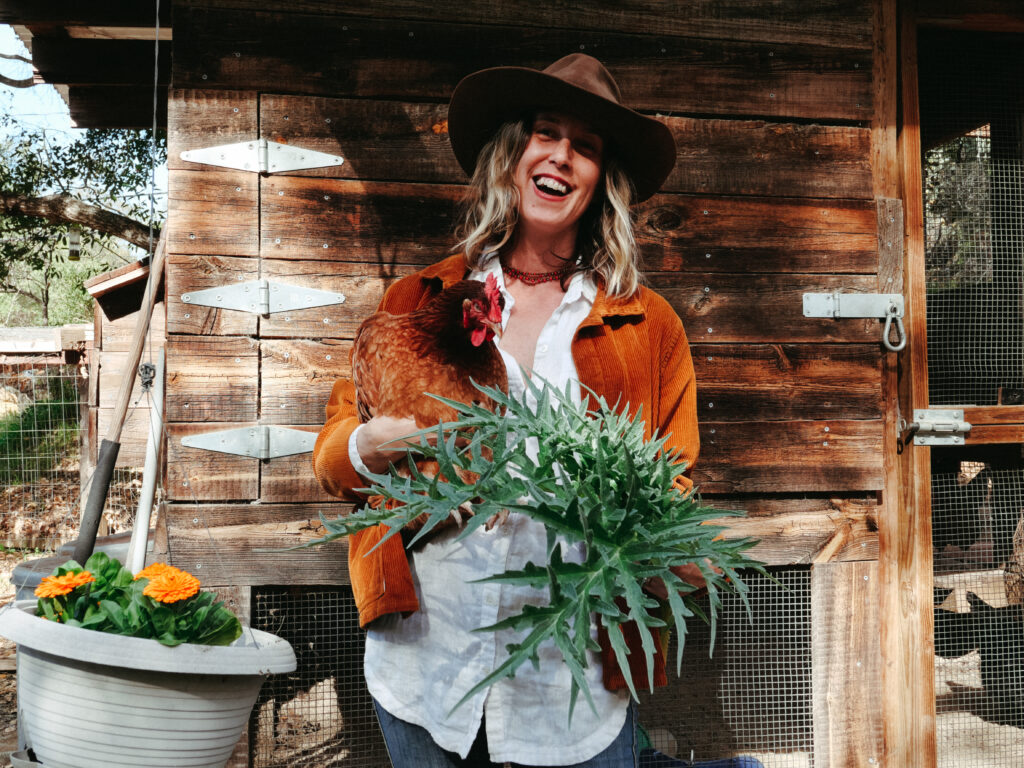
Olga Crawford spent her childhood summers in the dacha that her father built. The acclimation from the cadence in Moscow to living in the country wasn’t always enthralling. “Every time my grandparents would drop me off, I would have to recalibrate to a completely different way of life than the city. It took me a minute to get used to it. Then one day I would wake up and it would just click that on that land I could go and just lay in the meadow for hours and stare up at the sky, or swim in the muddy pond. We grew our vegetables, irrigated everything we grew from the creek. We had hens. I felt like I had a real childhood.”
Sunshine decided where Olga’s home garden in Topanga Canyon would spring from. Memories of her childhood in Russia at her family’s ‘dacha’ or summer home, where one would typically grow their own vegetables and seek respite from urban living, fostered a reciprocity with the land that she felt was important to share with her husband Sam and her three sons Max, Leo and Asa. “Doing this here in Topanga represents my roots.”
Her family’s homestead in Topanga Canyon is canopied by ancient oaks and they share the land with chickens, apiaries of honey bees and their three pups, along with many other critters just passing through or putting down roots. Stewarding a homestead means listening to the cadence of all these living things. Olga shared a couple homesteading tips that are practical, like using popcorn buckets to cover tomato seedlings at night until they are hardy enough to withstand nocturnal wildlife. She forages wild artichokes leaves sprouting about the property for her hens to nibble on when they’re not on their ‘chicken run’. Inside their hen coup, built by her husband Sam, the cooing of the hens couldn’t be more reminiscent of happy chickens. She shares that happy, healthy hens graze on all the wild greens and wiggling curiosities near the ground. When Olga reached into the nest where the eggs were laid, she emerged with a handful of eggs with shells gleaming blue green and copper.
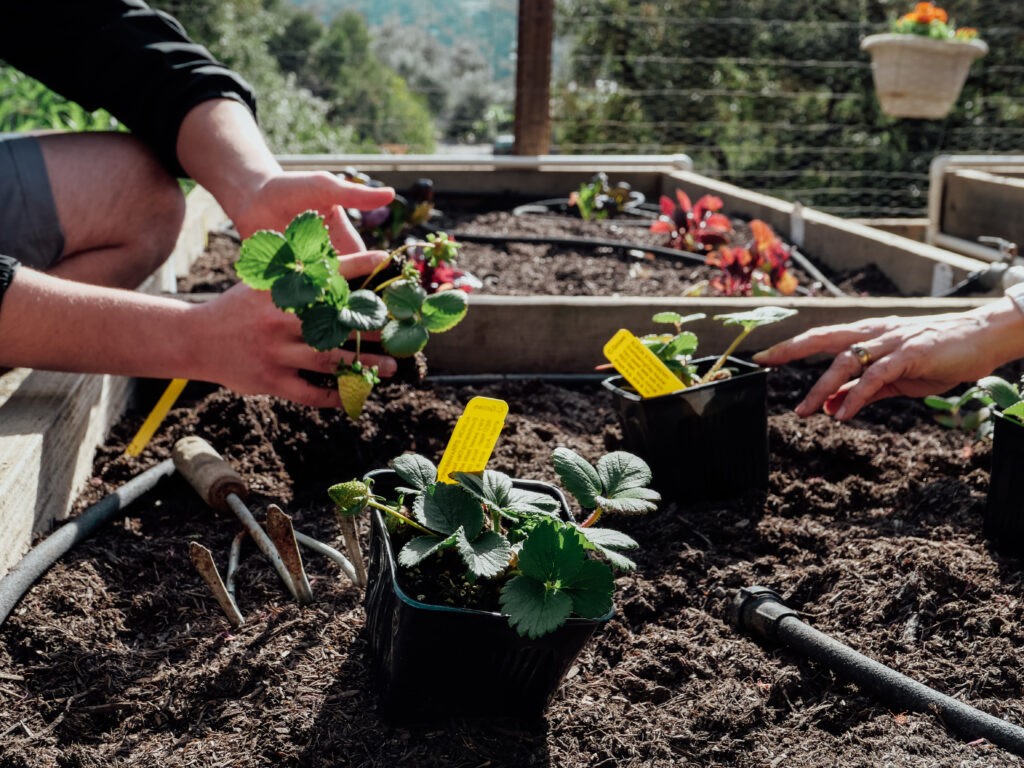
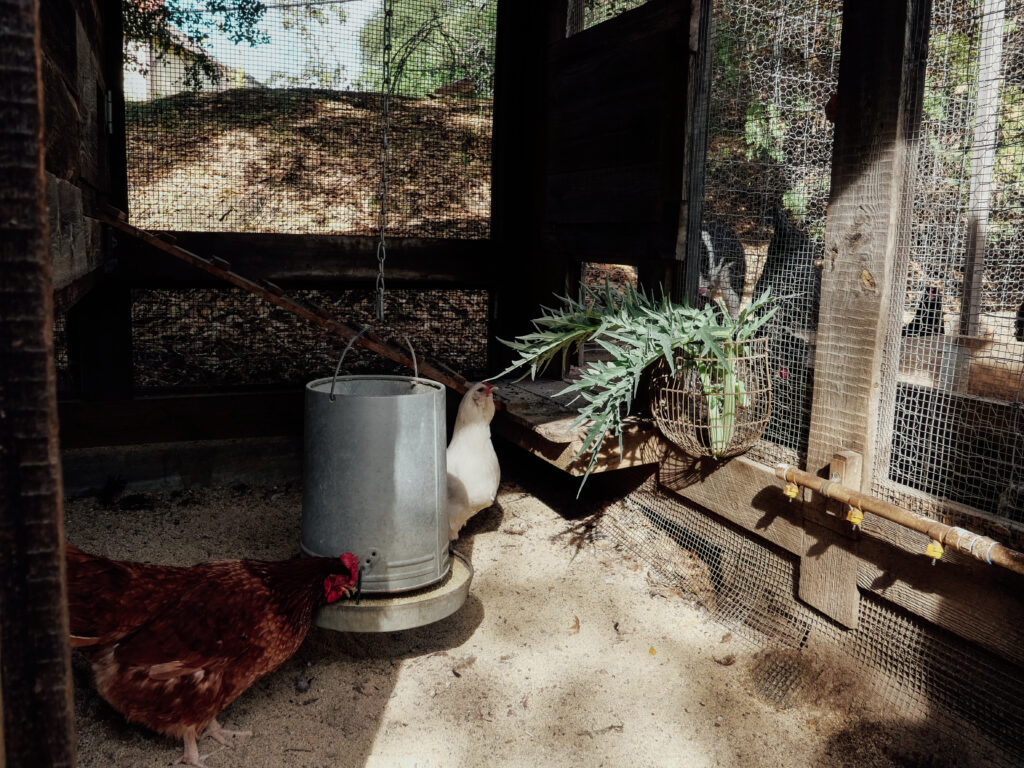
When asked if it always feels labor intensive, she recalls a handful of years she had tended to her garden so well, it had begun producing enough for her to forego shopping for vegetables at the market altogether.
“I certainly had an experience with a rot garden before I was able to successfully do this. It was in my early twenties, I had just met my husband Sam and didn’t really know what I was doing. I picked a spot that was way too shady. When I had kids I decided, this is it, I am really going to do this, I am going to do it well, and do it for them.”
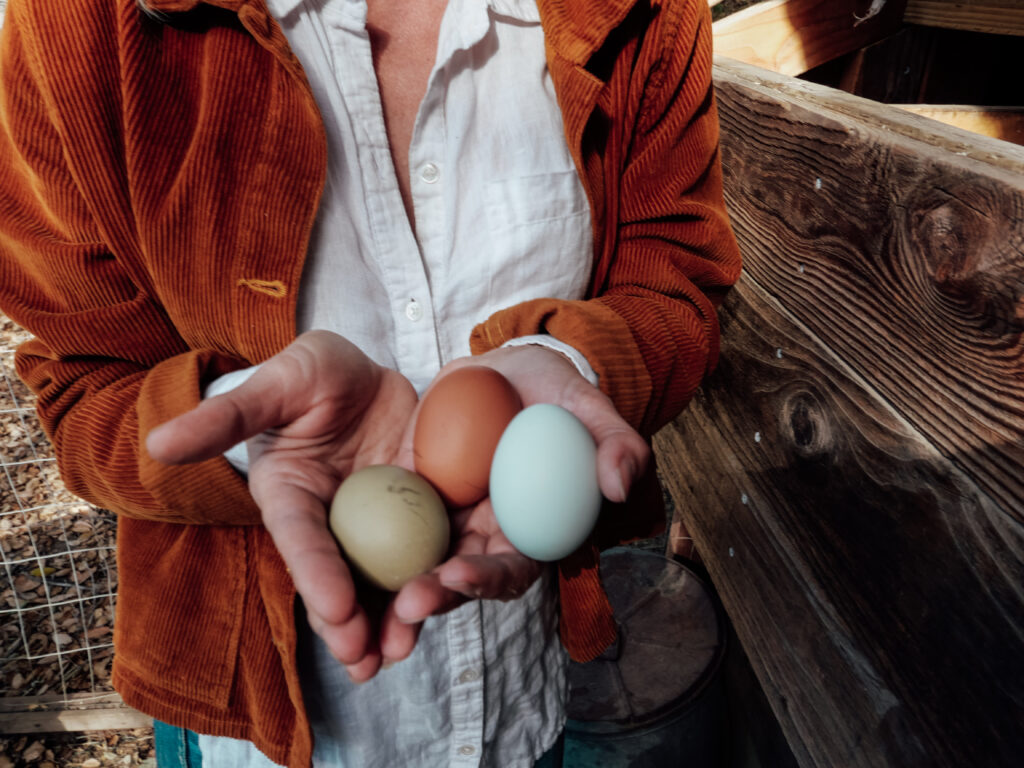
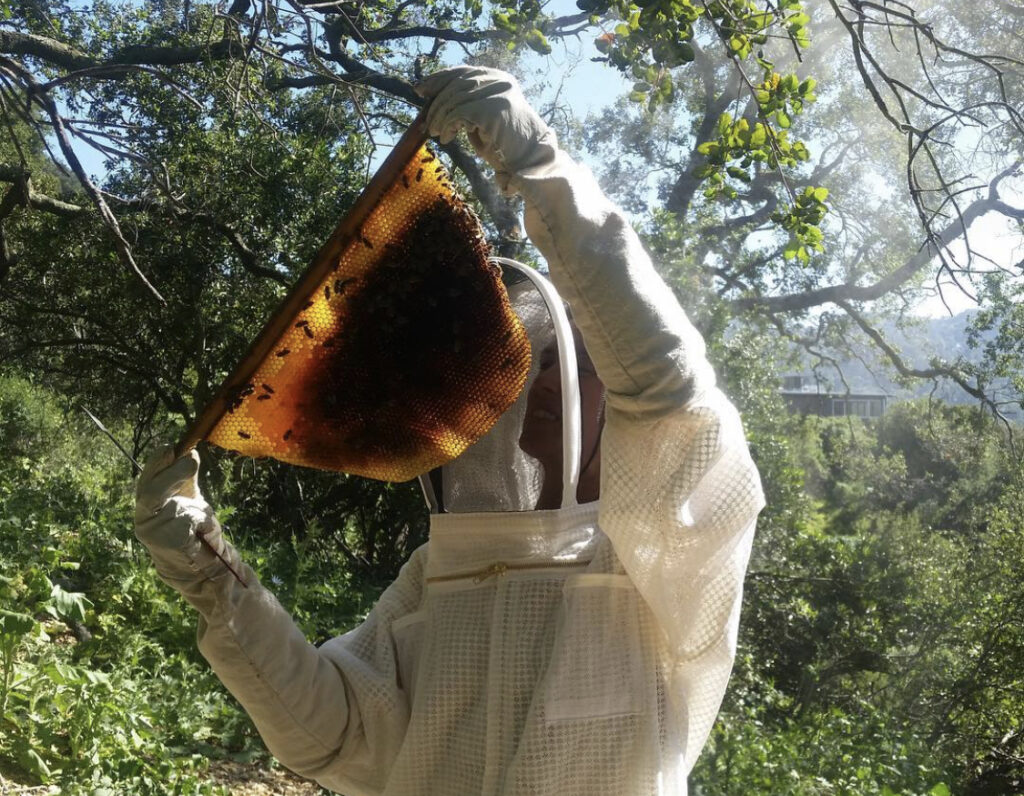
Thus far Olga has catalogued it seamlessly, digitally, in a way that allowed her to cross pollinate with homesteaders around the globe, all reveling in, tending to, and troubleshooting the medley of situations that could arise with land stewardship. Everything from gophers, to runaway chickens and bee swarms. “Bees have such an unusual way of deciding where to build their hive after a swarm. They literally send out location scouts, a handful of them go out into the field, they research, then they come back to the queen and report back their findings by doing this little dance in a figure eight shape. Sometimes I feel like I am reading a mystery or crime novel when I am reading about bees. They’re little engineers.”
Few joys in life are as completely and utter satisfying as biting into something homegrown, whether in a backyard or a windowsill, intention is the root of the bud.
“One day I hope to put together a book for my kids. This really feels like the best thing I have ever done for my boys, Max was around 13 and the Asa was 7 when we started. We were able to experience it as a family. I love thinking about how amazed we were and still are by some of the things we grow here. Giant squash growing in the garden, picking berries in the morning before school. It was all a part of it and I feel it’s super important to make these connections for them; real food is grown, it comes from the ground.”
Cross pollinate with the Crawford family’s virtual archive #CrawfordVeggieGarden #CrawfordApiaries on Instagram and follow @topangahomestead





